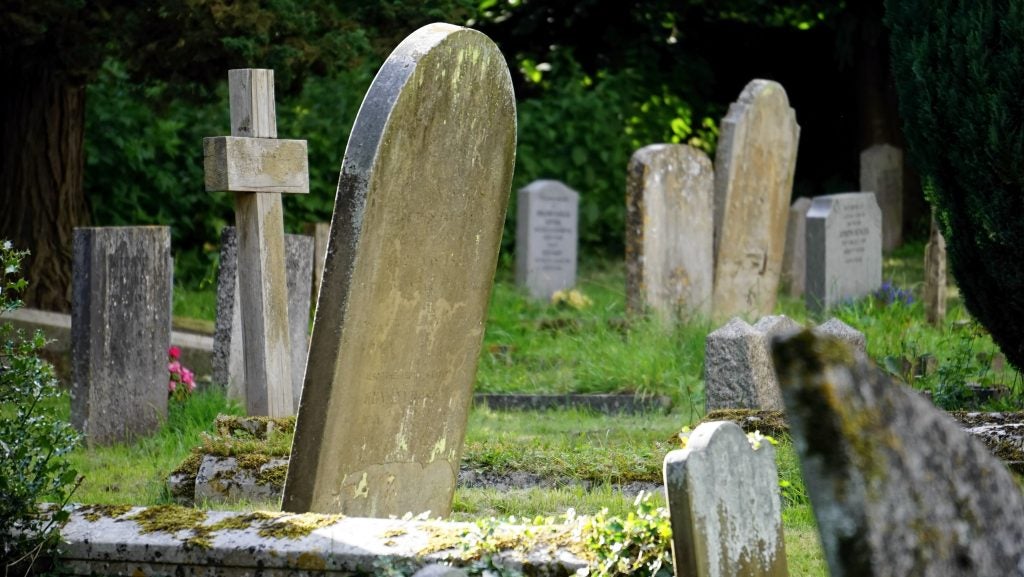
Necrophilia describes a paraphilia in which an individual is aroused or attracted to fantasies of or potentially direct sexual contact with the dead. Contact between the necrophile and the corpse can take the form of penile-vaginal intercourse, anal intercourse, oral sex, or masturbation in the presence of a corpse, but can also solely manifest as fantasy. Experts and lawmakers consider the explicit practice of necrophilia as nonconsensual due to the deceased individual’s inability to give consent. While necrophilia is fairly rare, it has occurred across the world for centuries.1
Table of Contents
Manifestation
In order to be diagnosed as a necrophile, one must experience at least six months of intense, recurring urges or fantasies involving sexual contact with a corpse. According to the DSM-V, the handbook used by health professionals to diagnose mental and behavioral conditions, these feelings must alter one’s behavior or cause significant distress.4 The primary demographic for necrophiles is heterosexual males who fall between the ages of 20 and 50, but there are reported cases of homosexual and female necrophiles. 2 It is believed that some necrophiles seek jobs at mortuaries or coroners’ offices where dead bodies are more easily accessible. This type of job is also more appealing than the loneliness of the gravedigging profession.2 Another way a necrophile may seek pleasure is by hiring sex workers to effectively act dead; they apply white makeup to give them the appearance of a corpse and lie still while participating in sexual acts. Cases of homicidal and/or cannibalistic necrophiles are remarkably rare and often sensationalized as a result of their obscene nature. However, because these cases are romanticized in the media, some argue they may encourage those with such urges to find an outlet to pursue their desires.3
Necrophilia often appears alongside other paraphilias or fetishes, including cannibalism, necrophagia (the desire to consume dead flesh), vampirism, sadism, and ropedophilia/rozoophilia (when necrophilic desire is directed toward children/animals, respectively).2
Prevalence
Experts debate the prevalence of necrophilia, but current figures remain between 0-5% of the total population.3 The literature surrounding reported cases suggests that necrophilic behaviors are rare, but such data may not prove reliable when one considers that such behaviors are generally carried out in secret and leave no victims behind capable of reporting the perpetrator. As previously stated, some theories suggest that necrophilia stems from its association with cannibalism and society’s attention and romanticism of vampires.3 Society has drawn its attention to the celebration of vampires as a sex symbol, thus further glorifying the kind of sexual act that preys on the weak and dead. Self-reporting tends to pose issues with accuracy because many are not generally eager to label themselves with something heavily stigmatized, such as a paraphilia.
Causes of Necrophilia
A desire to have sex with dead people may stem from an intense fear of interacting with potential living partners. Necrophiles may view corpses as emotionally or physically non-threatening, thus presenting an easier outlet for sexual attraction, acts, and expression. Some necrophiles may be attracted to the fact that corpses cannot reject, disagree, manipulate, or abuse them. This observation does pose the question of whether the corpse actually has the ability to consent (or not). They may also enjoy the feeling of being completely in control.2 Oftentimes, the aspect of nonconsensual sex is what is most appealing to the individual; one person has been rendered essentially an object and exists solely for the pleasure of the other. Thus, it is also an extreme form of objectification.4
Necrophiles who act on their desires sometimes suffer from a lack of sexual inhibitions, inability to recognize social boundaries, or a general lack of remorse for the consequences of their actions.4 Certain psychological conditions, such as psychopathy or sociopathy, include an inability to experience feelings of empathy. Necrophiles who murder to obtain corpses—or who mutilate or eat the corpses after sexual intercourse—are more likely to suffer from such conditions.2
Having sex with a departed loved one may also be symptomatic of a romantic obsession, or an extreme denial that the loved one has passed. In this situation, the individual’s attempts to use sexual activities are to maintain an imagined relationship with the departed. The necrophile may view sexual actions as loving and affectionate, and as a link to what may have been.1 Some compare their actions to the famous scene in Shakespeare’s Romeo and Juliet, where Juliet kisses Romeo after he kills himself with poison.2 Furthermore, sex with a dead, non-consenting spouse or partner can be considered a form of domestic rape.5 It should be noted that the exact cause of necrophilia is still widely debated, and there is limited research surrounding the topic and its nuance.1
Variations of Necrophilia
Necrophilia is a broad term that experts have broken it down into specific classifications which are used to define and identify a person’s status, as well as to help clarify the spectrum of desires and behaviors. The ways in which necrophiles obtain sexual pleasure vary: some find it simply by being near corpses while others desire sexual intercourse with the dead.3
Currently, the most accepted delineation of the necrophilic spectrum is known as the ten-tier classification system, ranging from tier I to tier X.2

Class I: Role-Players
The first class describes individuals who do not actively seek sexual encounters with the dead but are aroused by their partner pretending to be dead. These individuals do not necessarily suffer from any pathological condition. Their partner may sit in an ice bath to lower their body temperature, use white face paint to appear paler, and be entirely non-reactive during a sexual interaction.2
Class II: Romantic Necrophiles
As previously stated, some necrophiles maintain romantic or passionate motivations for their urges and desires. The individuals from this class suffer from denial after the loss of a loved one; they refuse to believe the person has passed. Some might preserve or mummify body parts of the deceased individual and utilize them sexually. However, it is widely regarded that this classification of necrophilia tends to be temporary while the individual grieves, and they will eventually cease their necrophilic behaviors.2
Class III: Necrophilic Fantasizers
This classification describes individuals who solely fantasize about the possibility of a sexual experience with a corpse. They do not have any explicit desire to obtain or even touch an actual dead body. However, some enjoy masturbating near objects reminiscent of the dead, such as coffins. Others even self-pleasure at funerals or dirges.2 These fantasies can also include arousal when seeing dead bodies or strewn limbs, either in person or through media.5
Class IV: Tactile Necrophiles
These necrophiles require access to a dead body in order to fulfill their sexual urges. While they do not necessarily perform sexual acts on a corpse, they enjoy touching, fondling, or stroking them. It is suspected many of these individuals seek professions in mortuaries as the job requires tactile interaction with the dead, often in isolation. At this classification level, the individual might face legal repercussions.2
Class V: Fetishistic Necrophiles
In this class, individuals do not engage in sexual acts with a corpse, but fetishize specific objects belonging to a corpse. If they encounter a dead body, they might cut off a limb or steal their undergarments or clothes. Any item belonging to the dead body may be fetishized and used as a direct source of arousal.2
Class VI: Necromutilomaniacs
Individuals in this classification receive sexual pleasure specifically from mutilating, dismembering, or cutting up a corpse, often masturbating simultaneously. It is also reported that these individuals may consume parts of the body for further gratification.2 This classification is often linked with or accompanied by a preference towards sadism.5
Class VII: Opportunistic Necrophiles
Opportunistic necrophiles would not deliberately hurt others for the sake of obtaining sexual gratification, however they would utilize any opportunity to have sexual relations with a corpse. There are even cases of a person murdering someone for an entirely unrelated reason, only to become aroused upon handling the dead body.2
Class VIII: Regular Necrophiles
People who engage in regular necrophilia are those who do not find enough sexual attraction or gratification with living people, and therefore, they seek this experience with dead bodies as well. Many people with regular necrophilia have had a traumatic sexual experience previously in life and many even view sexual contact with corpses as a source of comfort and therapeutic experience.3
Class IX: Homicidal Necrophiles
This describes a condition in which a person actively murders people or animals in order to accommodate their necrophilic urges. They deliberately search for methods of attaining corpses in order to engage in sexual fantasies and acts with them.2
Class X: Exclusive Necrophiles
This is the most uncommon of all classes; exclusive necrophiles are individuals who cannot obtain sexual gratification nor achieve arousal from a living person. In order for them to reach such sensations, they must have access to and utilize a dead body.2
The following category does not necessarily fit within the ten-tier classification, though it is a prevalent term in understanding the spectrum of necrophilia.
Pseudonecrophilia
Sometimes included in class I of the ten-tier system, the exact definition of pseudonecrophilia is contentious amongst existing literature. It is used to describe those who are aroused by role-playing, in which one partner pretends to be dead. Others use this term to describe one who experiences fantasies about sexual interaction with a corpse but has no significant desire to actually do so. A final interpretation is that pseudonecrophiles have fantasies of sexual interaction with the dead but are still primarily attracted to the living.2
Studies on Necrophilia
There is a stigma surrounding many paraphilias that insist that such people are mentally ill, deficient, and/or unable to find a consenting partner to engage in sexual relations with. However, perspectives are changing as a result of the DSM-V definition of psychotic and mental illness.6 Contemporary literature acknowledges the shortcomings of research and tendency towards research bias when examining paraphilias. Furthermore, some studies suggest a causal link between paraphilics, necrophiles and people who abuse drugs and/or alcohol. While a broad distinction cannot be drawn here, these studies support that necrophiles may be under the influence when performing such acts.3 The prevalence of drugs and/or alcohol in one’s system often provides one with the ability to suppress their inhibitions and develop a sense of fleeting confidence.6
Therapies for Necrophilia
Individuals who want to manage or discuss their attraction to corpses may benefit from sexual therapy for atypical desire or seeing a professional counselor or therapist, namely one who specializes in sexual paraphilias.4
Concluding Remarks

Within the realm of paraphilias, necrophilia is fairly uncommon.1 There are many different classes of necrophilia that people desire to engage in. As is the case with any other atypical sexual urge or turn-on, it is important to remain aware of possible legal repercussions and boundaries that restrict one’s ability to act upon their attraction. Although having some atypical sexual behaviors can be relatively normal, acting upon these desires is an entirely different circumstance. Consent is crucial for every sexual encounter, and it is impossible to gain consent with a corpse as they are mentally and legally incapable of actively saying yes.
References
- Burg, B. R. “The Sick and the Dead: The Development of Psychological Theory on Necrophilia from Krafft-Ebing to the Present.” Journal of the History of the Behavioral Sciences.
- Aggrawal, Anil. “A New Classification of Necrophilia.” Journal of Forensic and Legal Medicine, 9 Dec. 2008, pp. 316–320.
- Rosman, Jonathan P., and Resnick, Phillip. “Sexual Attraction to Corpses: A Psychiatric Review of Necrophilia.” Bull Am. Acad. Psychiatry Law, Vol. 17, No.2, 1989.
- Knafo, Danielle. “For the Love of Death: Somnophilic and Necrophilic Acts and Fantasies.” Journal of the American Psychoanalytic Association, vol. 63, no. 5, Oct. 2015, pp. 857–886.
- Crooks, Robert and Baur, Karla. “Our Sexuality.” Thomson Learning, Inc. 2005.
- Diagnostic and Statistical Manual of Mental Disorders, Fourth Edition. American Psychiatric Association. 2005.
Last Updated: 21 January 2020.
